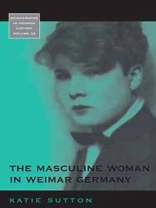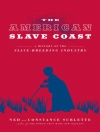Throughout the Weimar period the so-called “masculinization of woman” was much more than merely an outsider or subcultural phenomenon; it was central to representations of the changing female ideal, and fed into wider debates concerning the health and fertility of the German “race” following the rupture of war. Drawing on recent developments within the history of sexuality, this book sheds new light on representations and discussions of the masculine woman within the Weimar print media from 1918–1933. It traces the connotations and controversies surrounding this figure from her rise to media prominence in the early 1920s until the beginning of the Nazi period, considering questions of race, class, sexuality, and geography. By focusing on styles, bodies and identities that did not conform to societal norms of binary gender or heterosexuality, this book contributes to our understanding of gendered lives and experiences at this pivotal juncture in German history.
Inhoudsopgave
List of Figures
Acknowledgments
Introduction: ‘The Masculinization of Woman’
Chapter 1. ‘Which One is the Man?’ The Masculinization of Women’s Fashions
Chapter 2. ‘In the Beginning there was Sport’: The Masculinized Female Athlete
Chapter 3. ‘My Emil is Different’: Queer Female Masculinities in the Weimar Media
Chapter 4. The Trouser Role: Female Masculinity as Performance
Chapter 5. Beyond Berlin: Female Masculinities in Weimar Fiction
Conclusion
Bibliography
Over de auteur
Katie Sutton is Associate Professor of German and Gender Studies at the Australian National University, Australia. She is also the author of Sex between Body and Mind (2019) and Sexuality in Modern German History (2023), and numerous articles on German queer, trans and gender history and culture, as well as on and the history of sexual science.












